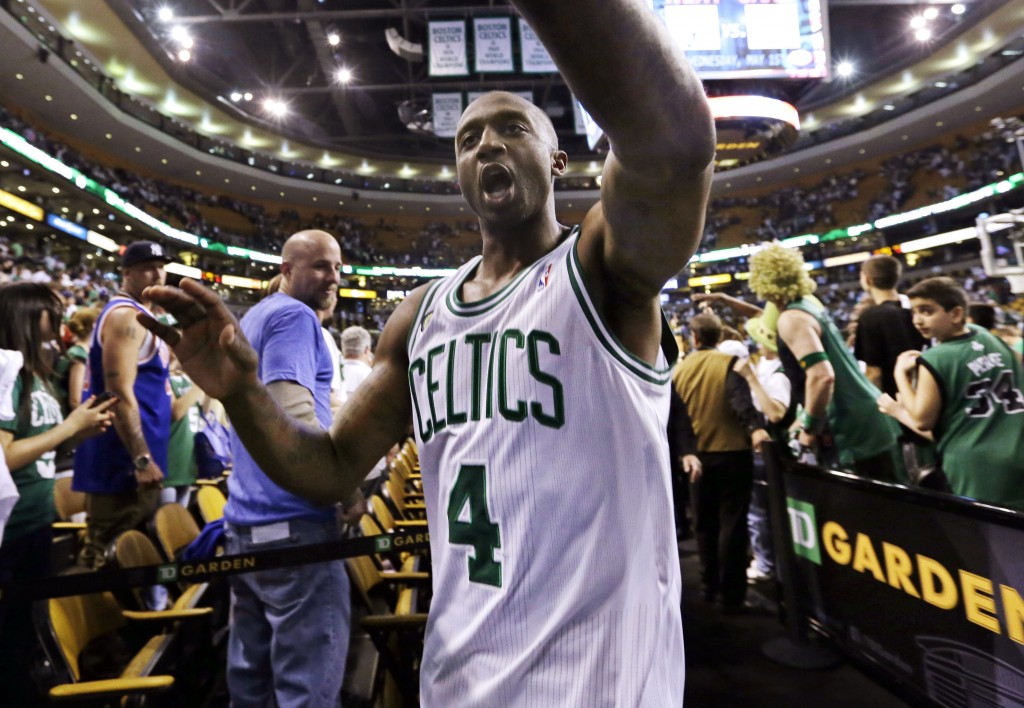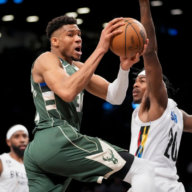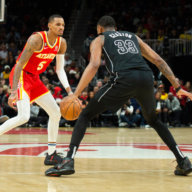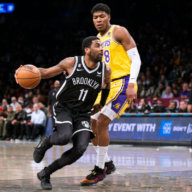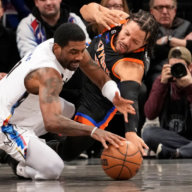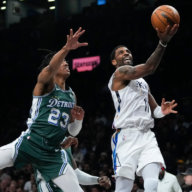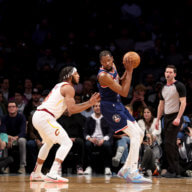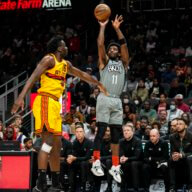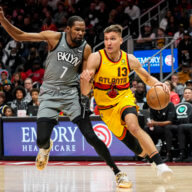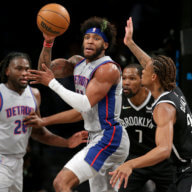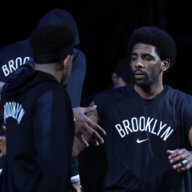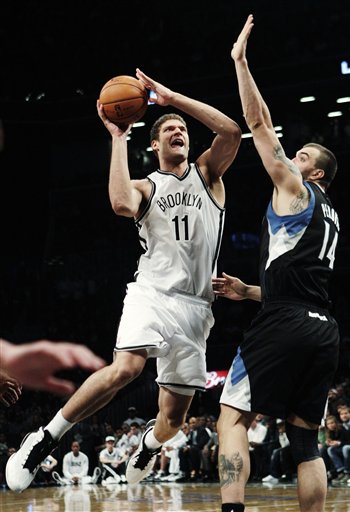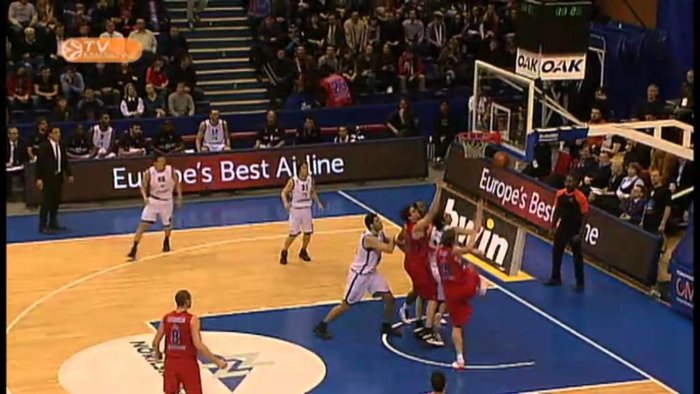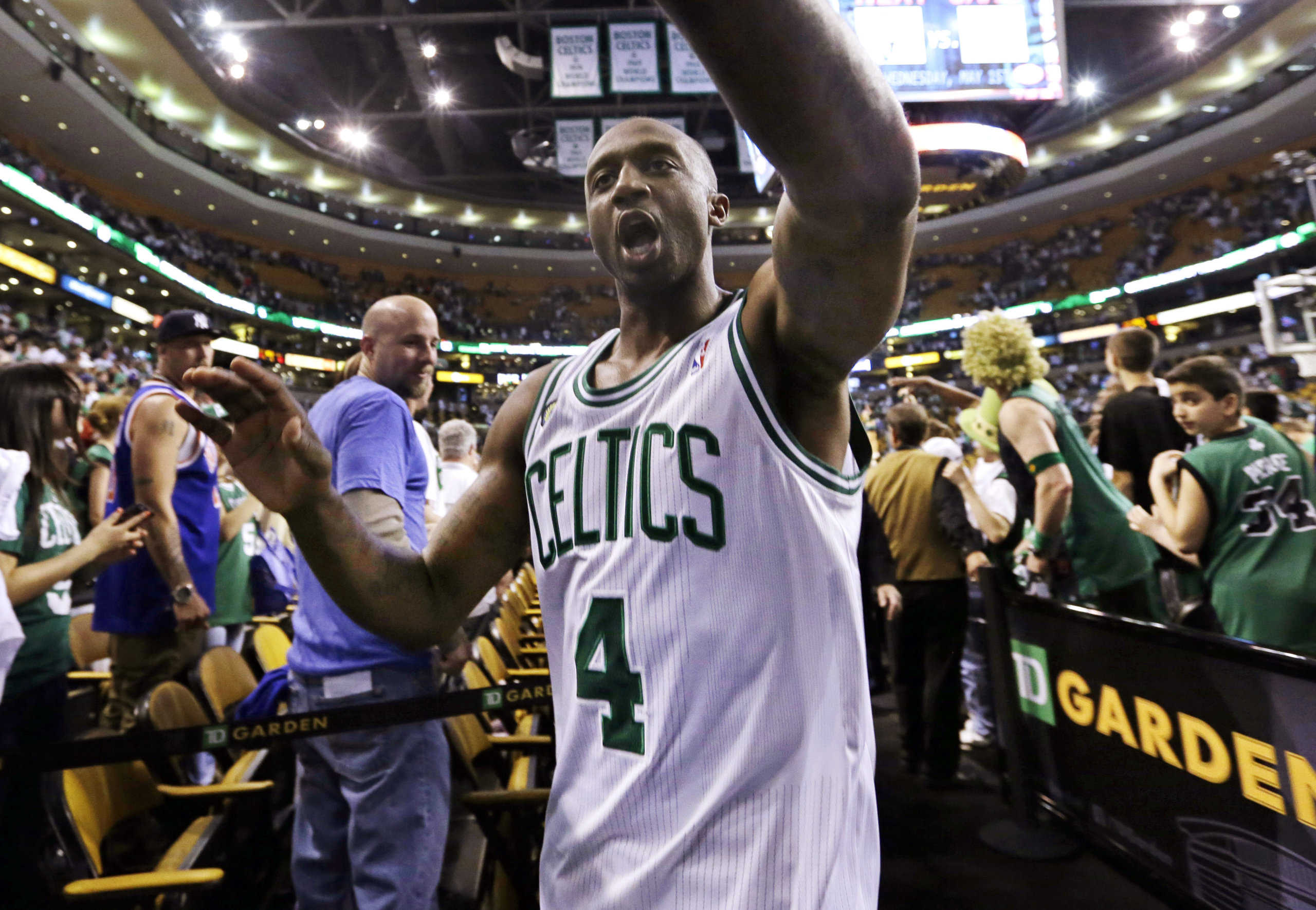
Episode three of We’re In Week sees Chris Hooker talking the forgotten member of The Trade, Jason Terry.
You know what I love about the Mikhail Prokhorov-era Nets? Money doesn’t matter. Luxury tax, salary cap, who cares? Trading away good players because the team can’t afford him? Not in Brooklyn.
So as we go through the Nets newest pricey bench player, let’s just remember that money doesn’t matter. It’s irrelevant and invalid to any anti-Jason Terry argument. At least that’s what I believe. Got it? Let’s move on.
Here are the facts: If you pick up Terry and his disappointing and down statistics from last season and put him on last years Nets roster, he, per 36 minutes, put up more points per game than CJ Watson, shot better from behind the arc than single-season made-three-pointers record holder Deron Williams, and better from the field than Joe Johnson. Outside of Andray Blatche, and whatever you would consider Reggie Evans, he would have had the best win share rating of anyone coming off Brooklyn’s bench.
I’m not going to sit here and pretend that Terry is the perfect bench player. He’s not. He’s 35, his numbers have declined every year since the 2008-2009 season that won him NBA’s Sixth Man of the Year. The biggest drop in numbers took place this last season.
But I believe that even if Terry has a repeat performance of last season, he will still be a valuable option off the Nets bench.
Right now, the Nets eight-man rotation is something along the lines of Williams-Johnson-Paul Pierce-Kevin Garnett-Brook Lopez-Andrei Kirilenko-Terry-Blatche. Add in Reggie Evans, Mirza Teletovic, Shaun Livingston and Tornike Shengelia to round out the rest. That lineup gives the Nets plenty of offense in the starting lineup, a top five who could easily score 20 points apiece any given night, and a bench that is… not so much.
Kirilenko may be a defensive wizard, but his 50.7% shooting percentage from the field is more due to to his shot selection than being a standout scorer, as 63% of his shots on the season came at the rim to less than 10 feet from the basket. Gimme buckets, if you will.
Blatche, of course, is a more of a post player and mid-range jumper guy. Excellent offense off the bench, but his range is limited.
Teletovic is inconsistent and spotty. Livingston can’t shoot. Shengelia is an unknown. Evans, yep.
So that leaves Terry.
Until Teletovic proves he can take the role as the team’s “shooter,” Terry needs to step up and be that guy for Brooklyn. Instant offense. He has one role to fill on off the bench, and that’s hit three-pointers for 20 minutes a game. Everything else the Nets have covered offensively.
Let’s look a little deeper into Terry’s “down” year for the Boston Celtics. He made 37.2% of his three-pointers last season, which is just .5% off his career average, and and actually .6% better than he shot the year he won Sixth Man of the Year.
Last season, Terry took 365 three pointers (making 138), or 56% of his total shots on the season. Add in the 132 additional shots (making 64) from 16 feet to just inside the three-point arc, and Terry essentially made a living off the long range jumper last season.
Okay, so if Terry basically put up the same percentage of three-point shots last season as the year before (37.2% in 2013, 37.8% in 2012), and still took many of them, why did his overall numbers decline?
Part of this was a hit he took in minutes (31.7 to 26.9) and in number of shots (13.2 to 8.2) per game. Boston last year was also a team loaded with potential shooters. Pierce, Garnett, Rajon Rondo, Jeff Green and Avery Bradley all took more shots per game than Terry, while Jordan Crawford and (sort of) Brandon Bass took about as many. In Dallas, Terry thrived in being the go-to long range shooter. In Boston, he was needed, and expected, to fill the Ray Allen role, but it ended up being “filled” (unsuccessfully) by multiple players.
Terry will also be a great fit in Jason Kidd’s anti-iso-based system, as he is not a player comfortable playing in isolation. According to Synergy, just 5% of his possessions came in isolation play, while 18.4% came off screens (where he shot 38.9% from the three) and 30.8% came in spot-up situations (where he shot 39.3% from the three). The lack of iso-play goes farther, as Terry was assisted on 87% of his three-pointers.
What does this mean? It means that in order to use JET to his full potential, he needs to play with an elite passer, someone who can find him on the wing for a three and where he isn’t necessarily the primary ball handler. The Nets will surely use Williams-Terry sets, but it also works to Terry’s advantage that they went the pass-first route in a backup point guard. Again, Livingston is a guy who will be able to find an open Terry for a three.
Terry played a lot of last season with Pierce and a revolving door of point guards after Rondo went down. It’s safe to say that the looks Terry got were not there like they were when Rondo was on the floor, or when Kidd was his point guard in Dallas.
The Nets lost a fairly significant piece to their bench with the departure of CJ Watson. But, it looks like Terry has been put in a position to be successful off in replacing this role. He just needs to hit his threes and flap his wings.
And maybe get a Brooklyn Nets tattoo while he is at it.

